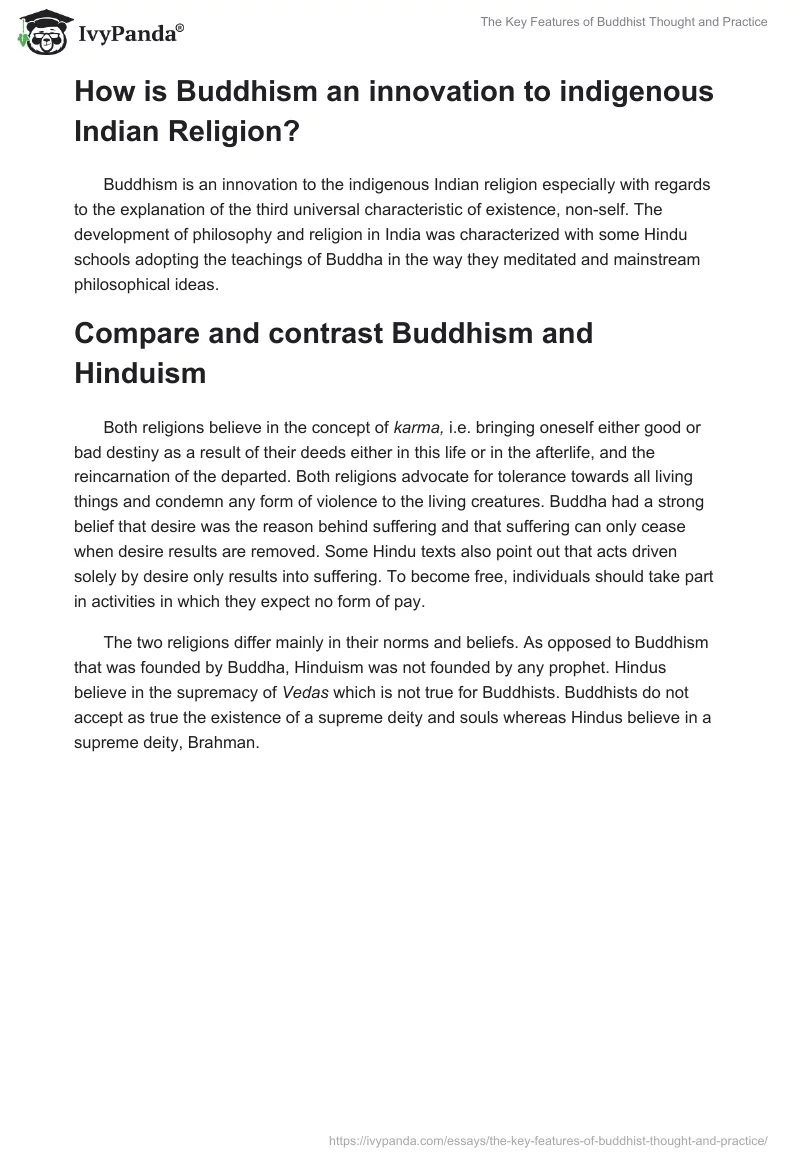What are the key features of Buddhist thought and practice?
The most important teaching of Buddha is anchored on the universal characteristic of existence. This is where the doctrinal contents of wisdom are propped. Buddhists believe in impermanence, suffering, and non-self. These three characteristics are always connected with existence as they tend to illuminate the nature of existence as well as helping the faithful to have knowledge of what to do with existence. Upon developing a deeper understanding of impermanence, suffering, and non-self, one gets to appreciate that existence of these three elements. With these three characteristics, one gets to disconnect the link between himself and existence. The disconnection of the link enables one to gain threshold of Nirvana.
The severing of attachment is attained by removal of delusions that sways someone into believing that existence is permanent, pleasant, and has got much to do with self. This is what makes the deeper understanding of impermanence, suffering, and non-self an integral part of contents of wisdom in Buddhism. The characteristic of impermanence makes part of Buddhist philosophy. It implies that things keep on changing and are transient in nature. The Buddhist scriptures say that the three worlds are impermanent like autumn clouds. The three worlds are known as Dhatus. The scriptures talk of birth and death to be like a dance. Human life is compared to flash of lightning or a waterfall.
These are all used to imply impermanence and help the faithful appreciate that things are characterized by impermanence. Human bodies are subject to changes. This underscores the impermanence in human life. People are born; they grow old and begin graying until their hair starts falling off. This is also true with the human person mental capability. For once, somebody is happy and in the subsequent minute he/she is sad. The constant changes that we undergo take place with or without people’s notice. It is pertinent that a Buddhist understands impermanence not only for the practice of Dharma but also to deeply understand their daily lives.
How is Buddhism an innovation to indigenous Indian Religion?
Buddhism is an innovation to the indigenous Indian religion especially with regards to the explanation of the third universal characteristic of existence, non-self. The development of philosophy and religion in India was characterized with some Hindu schools adopting the teachings of Buddha in the way they meditated and mainstream philosophical ideas.
Compare and contrast Buddhism and Hinduism
Both religions believe in the concept of karma, i.e. bringing oneself either good or bad destiny as a result of their deeds either in this life or in the afterlife, and the reincarnation of the departed. Both religions advocate for tolerance towards all living things and condemn any form of violence to the living creatures. Buddha had a strong belief that desire was the reason behind suffering and that suffering can only cease when desire results are removed. Some Hindu texts also point out that acts driven solely by desire only results into suffering. To become free, individuals should take part in activities in which they expect no form of pay.
The two religions differ mainly in their norms and beliefs. As opposed to Buddhism that was founded by Buddha, Hinduism was not founded by any prophet. Hindus believe in the supremacy of Vedas which is not true for Buddhists. Buddhists do not accept as true the existence of a supreme deity and souls whereas Hindus believe in a supreme deity, Brahman.


